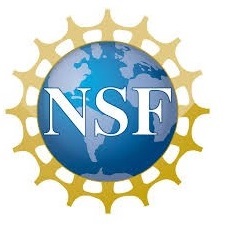Vasyl Tkach, Ph.D., Professor
Project: Molecular study of avian malaria
Mentor: Vasyl Tkach, Ph.D., Professor
Location: Department of Biology, Starcher Hall
Description: Malaria is one of the most serious infectious diseases of humans transmitted by mosquitoes and distributed mostly in tropical and subtropical regions of the world. However, other animals, such as birds, reptiles and wild mammals, also may have malaria. Moreover, while humans have only four species of malaria parasites, birds have hundreds worldwide. They may be transmitted by mosquitoes and black flies common in our region. Currently, more is known about avian malaria in tropical foreign countries than in the United States and especially in upper Midwest. There was a very limited amount of previous research studies of bird malaria in Minnesota and practically none was done in North Dakota. Research will include collecting samples in the field and screening them for avian malaria in the lab using DNA extraction, real time PCR, standard and nested PCR, and DNA sequencing. This will be done together with faculty, graduate and possibly with other undergraduate students.
Project: Revealing the agents of "swimmer's itch" in North Dakota and Minnesota
Mentor: Vasyl Tkach, Ph.D., Professor
Location: Department of Biology, Starcher Hall
Description: In summer time, people heading for recreation to lakes in our region (and elsewhere in the USA as well as other countries) often experience itching in their skin (mostly legs) associated with red dots and bumps not resulting from mosquito bites. This itching only appears after contact in water. The condition is commonly known as "swimmer's itch" while its scientific name is "cercarial dermatitis". Few people know that it is caused by microscopical larvae of parasitic flukes found as adults in blood vessels of aquatic birds. The larval stages live in snails and are released into water where they try to penetrate skin of ducks or humans, whichever comes first. Fortunately, the parasites cannot develop in humans beyond causing temporary itch. Currently, very little is known about these parasites in our region despite high diversity and numbers of birds and wide-spread swimmer's itch. Student will participate in a variety of activities and learn a variety of techniques including collecting snails in the field, screening them for fluke larvae, light microscopy and digital imaging, scanning electron microscopy, DNA extraction, polymerase chain reactions, gel electrophoresis, sequencing reactions and analysis of the results. The study will be conducted together with faculty, graduate and undergraduate students.
Project: Causative agents of "black spot" disease in fishes of North Dakota and Minnesota
Mentor: Vasyl Tkach, Ph.D., Professor
Location: Department of Biology, Starcher Hall
Description: "Black spot" disease is the infection of fish skin due to penetration and encystment by larval stages of certain types of parasitic flukes (trematodes). "Black spot" disease is widespread across the United States and is particularly common in the upper Midwest. The disease is characterized by raised, black nodules on the skin, fins, and eyes of fish. In cases of high intensity of infection, black spot disease can cause health issues ranging from mobility loss, increased vulnerability to predation and death. While it is known that the disease is mostly caused by flukes parasitic as adults in fish-eating birds, the exact etiology and diversity of these parasites is not sufficiently studied and varies region to region. Currently available molecular tools allow for matching DNA sequences of different life stages of these parasites and thus better understand their identity and life cycles in nature. Student(-s) will participate in a variety of activities and learn a variety of techniques including collecting snails and fish in the field, their examination for fluke larvae, light microscopy and digital imaging, scanning electron microscopy, DNA extraction, polymerase chain reactions, gel electrophoresis, sequencing reactions and analysis of the results. The study will be conducted together with Dr. Tkach and a graduate student.
Project: Mining next generation sequence data for phylogenetic signal
Mentor: Vasyl Tkach, Ph.D., Professor
Location: Department of Biology, Starcher Hall
Description: Next generation sequencing (NGS) technologies can be used for a number of purposes, from a variety of metagenomic approaches to clinical applications, functional, developmental and ecological genomics, etc. One of the possible applications is obtaining data for evolutionary analysis. NGS approach allows to obtain a large number of genes (up to a complete genome) that can be used for phylogenetic inference Dr. Tkach's laboratory has obtained several sets of next generation sequence data (using HiSeq technology) from parasitic flatworms. While assembling and annotating large amount of NGS data is a highly demanding process requiring a significant background and experience, there are simpler, but nevertheless useful, ways to utilize some of this data. The goal of this project will be to extract, assemble and annotate complete mitochondrial genomes (they are only 14,000-16,000 base pair long) from one to a few parasitic flatworm species, align them with previously published genomes and assess their utility for phylogenetic inference or/and differentiation among species. To do this, student will need to learn several pieces of specialized installed and on-line software, some simple, some more complex. This is a computer-based project.

